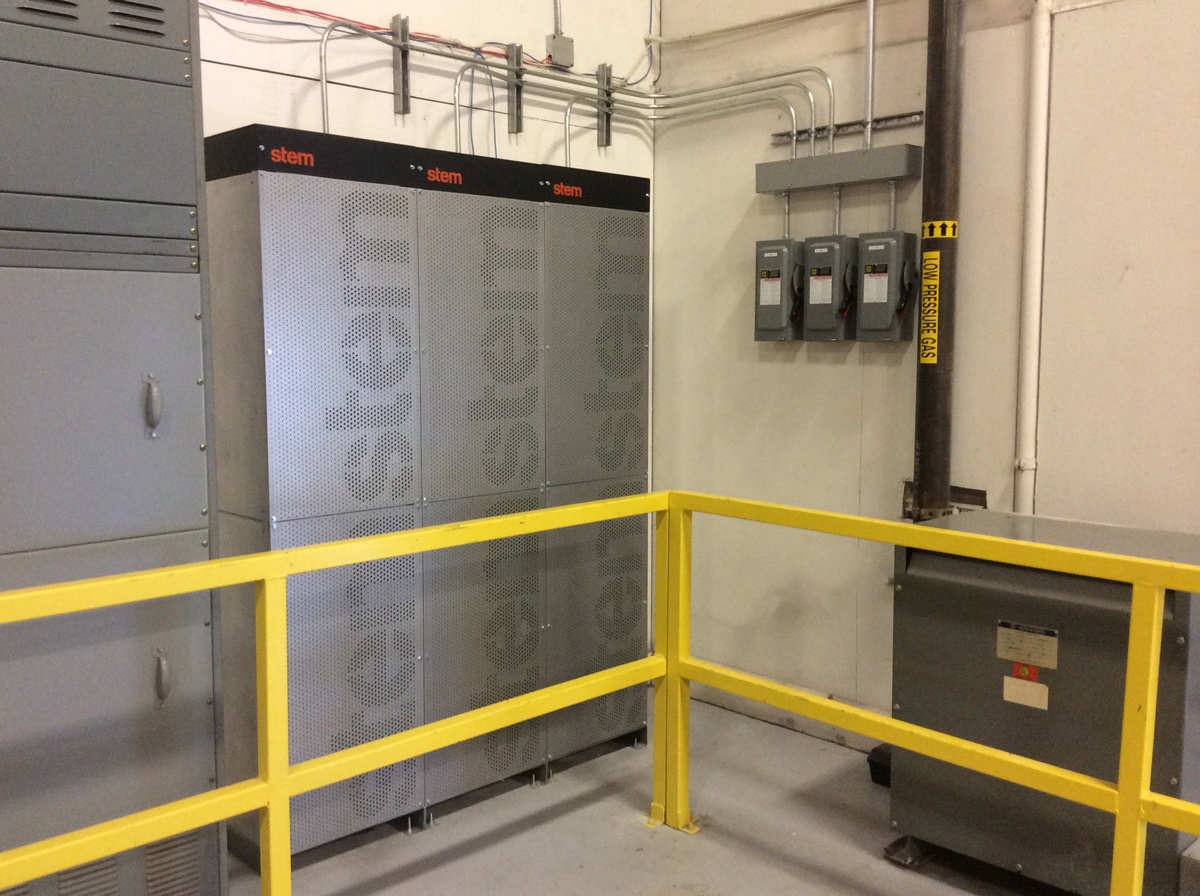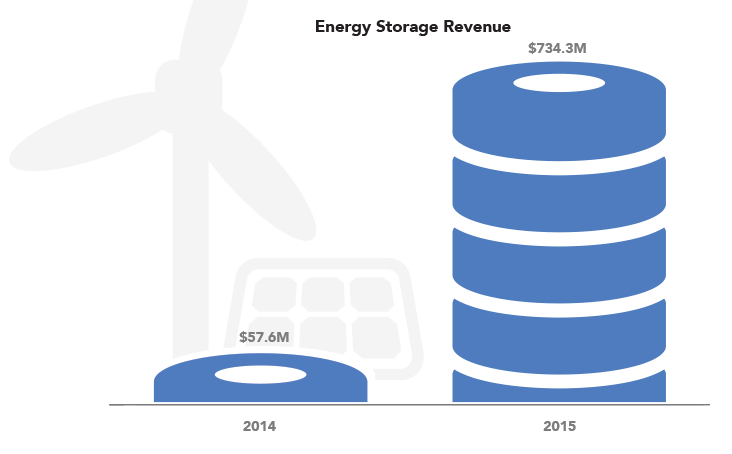This post is one in a series featuring the complete slate of advanced energy technologies outlined in the report This Is Advanced Energy.

Image courtesy of Stem, Inc.
Without energy storage, electricity must be produced and consumed instantaneously, requiring generating capacity to be built and available to meet peak demand no matter how rarely peaks occur. To relieve this requirement, several energy storage technologies are currently mature and commercially available, including pumped hydro, compressed air energy storage (CAES), flywheel systems, electrochemical batteries such as sodium-sulfur batteries and lithium- ion batteries, flow batteries, and thermal storage. These technologies take in electrical energy when it is produced and store it as kinetic, chemical, thermal, or potential energy for conversion back to electricity when needed.
While pumped hydro accounts for 95% of the 25 GW of existing energy storage capacity on the U.S. grid, most new storage capacity being added to the grid at the transmission and distribution level relies on other technologies, with 62 MW of non-hydro storage capacity added in 2014 and nearly 200 MW in 2015. In 2020 cumulative installed capacity of non-hydro energy storage is expected to reach 2 GW, growing to a $2 billion market. A variety of technologies are already operational throughout the country, such as a 32 MW lithium- ion battery system by AES Energy Storage in Belington, West Virginia; a 110 MW CAES system in McIntosh, Alabama; and a 20 MW flywheel system in Hazle Township, Pennsylvania. In addition, energy storage is increasingly being deployed behind the meter, giving residential, commercial, and industrial consumers new options for managing their energy use and costs while providing valuable grid services.
As part of a modernized, flexible grid, energy storage is taking on increasingly important and diverse roles, with the different types of energy storage providing grid benefits ranging from peak load shaving to ancillary services to cost-effective renewable integration. Pumped hydro is a bulk storage technology particularly well suited to meeting daily peak demand; lithium-ion batteries can aid in peak load shaving, smoothing out variable renewable generation, and meeting behind-the-meter energy management needs; and flywheels provide rapid-response ancillary services such as frequency regulation, inertial response, voltage support, and reactive power. Aggregators enable smaller behind-the-meter systems to bid into markets to provide peak capacity resources or grid optimization services, as Stem Inc. has done in California.

According to AEE's new report, Advanced Energy Now 2016 Market Report, Energy Storage reached $743 million in revenue, growing 12 times over 2014. This game-changing technology can provide grid support services, meet peak demand needs, and store variable renewable energy generation until it’s needed.
Energy storage can also be used to defer or avoid infrastructure investments. In New York, ConEdison expects to defer a $1 billion transmission and distribution upgrade by investing $200 million in a combination of traditional solutions and distributed energy resources, including energy storage installed on its distribution system. Similarly, deploying a battery system instead of transmission upgrades lowered infrastructure costs to ratepayers of Central Maine Power from $18 million to $6 million. Energy storage is also an important component of microgrid systems (p.33), and behind-the-meter energy storage can be used by residential and commercial customers to reduce peak electricity costs and demand charges while helping utilities to manage system-wide peak demand to benefit all customers.
